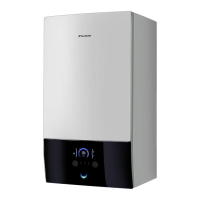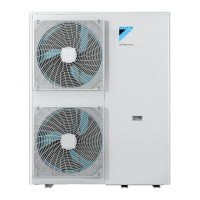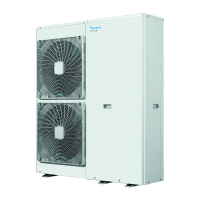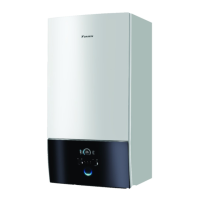5 Application guidelines
Installer reference guide
13
ERHQ+ERLQ011~016 + EHBH/X11+16CB
Daikin Altherma – Low temperature split
4P384974-1 – 2015.01
▪ A shut-off valve (field supply) is installed before the under floor
heating to prevent condensation on the floor during cooling
operation.
▪ The desired room temperature is set via the remote controller of
the heatpump convectors.
▪ The space heating/cooling demand signal is sent to one digital
input on the indoor unit (X2M/1 and X2M/4)
▪ The space operation mode is sent by one digital output (X2M/32
and X2M/33) on the indoor unit to:
▪ The heatpump convectors
▪ The shut-off valve
Configuration
Setting Value
Unit temperature control:
▪ #: [A.2.1.7]
▪ Code: [C-07]
1 (Ext RT control): Unit operation
is decided by the external
thermostat.
Number of water temperature
zones:
▪ #: [A.2.1.8]
▪ Code: [7-02]
0 (1 LWT zone): Main
External room thermostat for the
main zone:
▪ #: [A.2.2.4]
▪ Code: [C-05]
1 (Thermo ON/OFF): When the
used external room thermostat or
heatpump convector can only
send a thermo ON/OFF
condition. No separation between
heating or cooling demand.
Benefits
▪ Cooling. Heat pump convectors provide, besides heating
capacity, also excellent cooling capacity.
▪ Efficiency. Under floor heating has the best performance with
Altherma LT.
▪ Comfort. The combination of the two heat emitter types provides:
▪ The excellent heating comfort of the underfloor heating
▪ The excellent cooling comfort of the heatpump convectors
5.2.2 Multiple rooms – OneLWT zone
If only one leaving water temperature zone is needed because the
design leaving water temperature of all heat emitters is the same,
you do NOT need a mixing valve station (cost effective).
Example: If the heat pump system is used to heat up one floor
where all the rooms have the same heat emitters.
Underfloor heating or radiators – Thermostatic
valves
If you are heating up rooms with underfloor heating or radiators, a
very common way is to control the temperature of the main room by
using a thermostat (this can either be the user interface or an
external room thermostat), while the other rooms are controlled by
so-called thermostatic valves, which open or close depending on the
room temperature.
Setup
A Main leaving water temperature zone
B Room 1
C Room 2
a User interface
▪ The underfloor heating of the main room is directly connected to
the indoor unit.
▪ The room temperature of the main room is controlled by the user
interface used as thermostat.
▪ A thermostatic valve is installed before the underfloor heating in
each of the other rooms.
INFORMATION
Mind situations where the main room can be heated by
another heating source. Example: Fireplaces.
Configuration
Setting Value
Unit temperature control:
▪ #: [A.2.1.7]
▪ Code: [C-07]
2 (RT control): Unit operation is
decided based on the ambient
temperature of the user interface.
Number of water temperature
zones:
▪ #: [A.2.1.8]
▪ Code: [7-02]
0 (1 LWT zone): Main
Benefits
▪ Cost effective.
▪ Easy. Same installation as for one room, but with thermostatic
valves.
Underfloor heating or radiators – Multiple external
room thermostats
Setup
A Main leaving water temperature zone
B Room 1
C Room 2
a External room thermostat
b Bypass valve
▪ For each room, a shut-off valve (field supplied) is installed to avoid
leaving water supply when there is no heating or cooling demand.
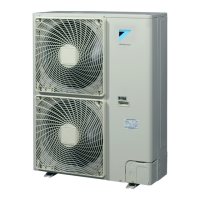
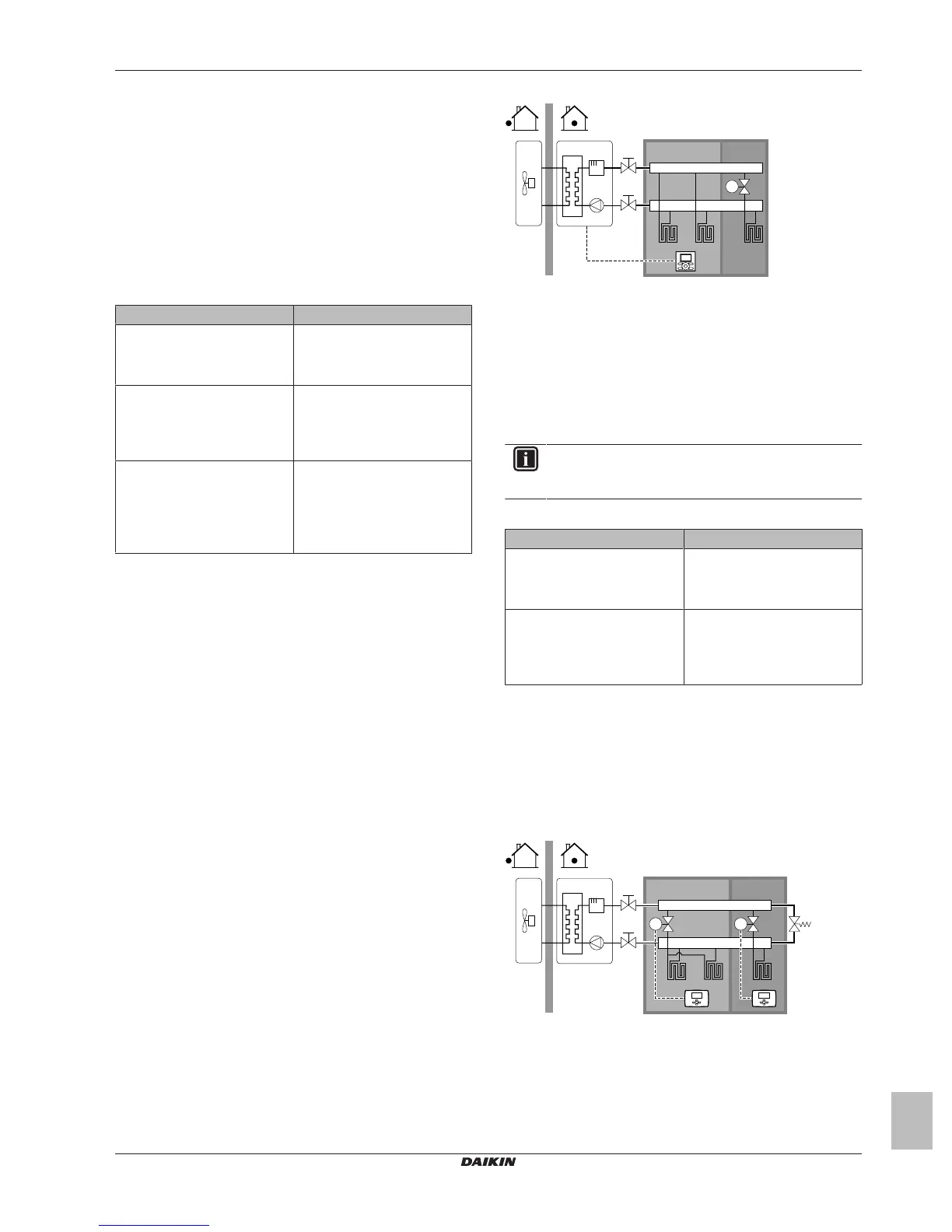